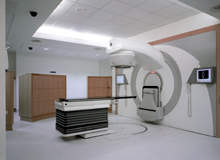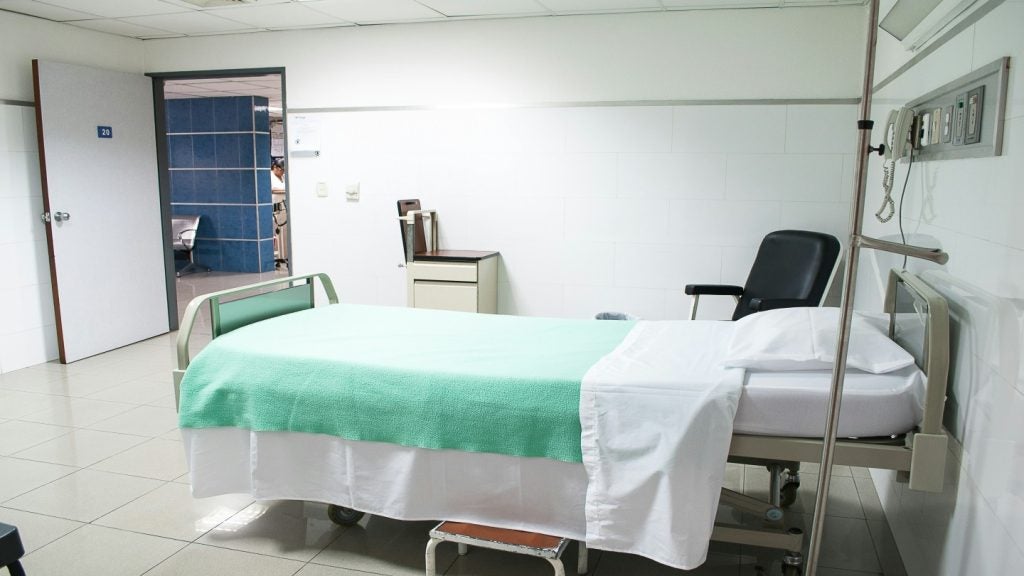
The concept of using design to improve a process has been around since man first rubbed two sticks together and came up with the drawing board. From the inspirational to the functional, the design process is key. To enhance a system or turn a dream into reality you need ideas and innovation.
Traditionally, public services haven't always been regarded as being at the cutting edge of design. The drab, grey, public sector monstrosities of the 1960s are testament to that.
However, in more recent years design has been used to great effect by public services to enhance quality of life. 'Designing out crime', for example, has long been an essential criterion in new building developments to combat a range of crime issues, from residential burglary to antisocial
behaviour.
The healthcare sector is no different. Instead of the design focus being on crime, it is to crack down on healthcare-associated infections (HCAIs) or, to be more sensationalist, superbugs.
Design medicine
See Also:
The new 'Design Bugs Out' competition – sponsored by the UK Department of Health, NHS and Design Council – throws down the gauntlet to the design world to come up with solutions for reducing the number of HCAIs in the hospital environment.
How well do you really know your competitors?
Access the most comprehensive Company Profiles on the market, powered by GlobalData. Save hours of research. Gain competitive edge.

Thank you!
Your download email will arrive shortly
Not ready to buy yet? Download a free sample
We are confident about the unique quality of our Company Profiles. However, we want you to make the most beneficial decision for your business, so we offer a free sample that you can download by submitting the below form
By GlobalDataLooking to inject a bit of flair and excitement into the critical job of maintaining a safe and healthy environment, the challenge is to design and prototype new furniture, equipment and services for hospital wards to help improve infection prevention and control. There are five categories to choose from: hand hygiene; bedside environment; commode; patient transport; and an open brief to design a piece of equipment, furniture or system which directly or indirectly reduces the spread of common HCAIs in the healthcare environment
A panel of judges will select the five leading designs. The prize is £25,000 to cover R&D costs to develop prototypes that will be unveiled at seven NHS showcase hospitals around the country in April 2009.
Richard Seymour, director of Seymour Powell, is head of the judging panel. And he doesn't mince his words when discussing the serious element behind the competition. "This is people's lives we're talking about here," he says. "It's not about how pretty the cruet is or what shape the car is, it's about life and it's about saving lives. In my book, design is making life better for people. So let's do it."
He has a point. Underneath the PR gloss runs a very serious undercurrent. A report by the Department of Health and the Design Council back in 2003 concluded that the NHS was clueless about design and "seriously out of step with modern thinking and practice with regard to design".
Since that time a new world of the superbug has entered the public's reality. Whether rightly or wrongly, they have become synonymous with poor hygiene and put a faltering national health service in the public eye.
Although branded as clueless five years ago, it would be unfair to say that the NHS has done nothing to counter the superbug problem.
Encouraging innovation
Over the past few years the NHS has embraced new innovation and design to develop a wide-ranging programme that aims to reduce the number of HCAIs to the unavoidable minimum. The HCAI Technology Innovation Programme – of which 'Design Bugs Out' is a part – was launched in 2008. In September, figures from the Health Protection Agency showed that MRSA infections had fallen by 57% from the baseline set in 2003/04 – the lowest in the five years since the target was set.
Of course design and innovation isn't the entire answer. Common sense plays a large part. "We know that the basic ways of preventing and reducing HCAIs are largely unchanging," says Paul Cryer, programme manager of the HCAI Technology Innovation Programme.
"But new technologies and equipment can help us tackle things better and so help to reduce HCAIs more quickly. The Innovation Programme aims to speed up the development and introduction of technologies to help combat infections and improve cleanliness."
A key part to the design element of the programme will be the seven showcase hospitals. Technologies that have demonstrated they help reduce infection are evaluated to see how they work in practice and allow healthcare workers to see their impact, first hand.
The first phase of infection-beating products is currently being tested, and the Design Bugs Out prototypes will be showcased from next year.
Among them are disinfectants, silver alloy-coated hydrogel catheters, decontaminants, antibiotic dosers and a hygiene monitoring system.
Building better healthcare
It's not all about designing out infection through products and systems. The bigger picture is equally important. This year's Building Better Healthcare Awards, organised by Architects for Health, feature some cutting-edge nominations that successfully combine grand design with bug busting.
In the Best Interior Design category, Nightingale Associates' cardiothoracic centre for Basildon and Thurrock University Hospitals includes operating theatres, catheter laboratories, critical care and surgical wards. These are housed within a design that allows natural light to flow through almost every room.
Nightingale has also just completed a £3m Critical Care Unit for Plymouth Hospitals NHS Trust. Designed to enhance and improve the patient experience, it features two specially designed infection control rooms with adjustable positive and negative air pressure, which will help to control and prevent cross-infection.
Up for the Best Hospital Design award are Anshen + Allen. Their design of the £220m oncology centre at St James's Hospital in Leeds is visually impactive in making the best use of natural light throughout the complex.
As the largest cancer research hospital in Europe, the facilities include 12 Linac chambers, large outpatient and daycare suites, a substantial imaging department, theatres, critical care, laboratories and support spaces.
Project director John Cooper highlights the importance of linking the specific requirements of technology and clinical practice with the wider architectural opportunities that clinical processes present.
The design process "must create an exemplary working environment which encourages multi-disciplinary collaboration and enables staff to organise complex clinical processes as efficiently and effectively as possible", he says. In a design sense this is pulling together the connective tissue of a hospital which binds the clinical spaces together. It is also about making the most of the care environment and patient experience, from the products and systems that reduce infection, to the soft clinical spaces and surrounding landscape.
Liam Donaldson, chief medical officer for England and Wales, recognises the importance design plays in safety and the overall patient experience. It is an area that he says the healthcare sector has been slow to embrace.
"Design experts should be part of every team that seeks to find an effective solution to a major source of risk in patient care," he says. "They should embrace both technological areas but also so-called soft systems. The power of design has a potential to make healthcare of tomorrow safer than it is today. It should be used, and used with open mindedness and imagination."
With funding pressures always under serious strain it may take some persistence to make design a forefront of healthcare chiefs' mindsets. But, if they can be persuaded that saving lives, and in the long run, saving money is the overall outcome, perhaps safer design projects may get the acceptance they deserve.







